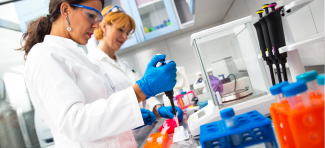Objectives
The preparation, handling and administration of hazardous drugs (cytotoxics, monoclonal antibodies and antibiotics, to name a few) pose considerable risk to the well-being of healthcare professionals and their patients.
This risk has been shown to be significantly mitigated through the use of specialist devices, called closed system transfer devices, which are manufactured in such a way as to block contaminants from mixing with the medicines, while preventing the escape of aerosols of the dangerous drugs into the environment. And yet, the uptake of these devices remains stubbornly low in Europe. We were tasked with finding out why, and what, if anything, might be done about it.
Our approach
The opinions of 200 of the most senior hospital pharmacists from the UK, France and Germany were collated through a programme of quantitative and qualitative research, resulting in a first-pass in understanding their perspective of the risk of contamination and the barriers to adoption of CSTDs. The ensuing report was discussed with the client in preparation for the following activity.
Two, six-hour advisory boards comprised of Directors of Pharmacy from the UK, The Netherlands, Germany, France and Spain provided depth and nuance to every conceivable facet of understanding of CSTD use. To these learnings was added the insight of a third advisory board comprised of highly influential senior oncology nurses from the UK, The Netherlands and Spain.
Outcome
The write-ups of the three advisory boards were distributed in Hospital Pharmacy Europe magazine. But of greater significance for our client, and for us, is the fact that we then worked with them to action the recommendations of the Boards.
